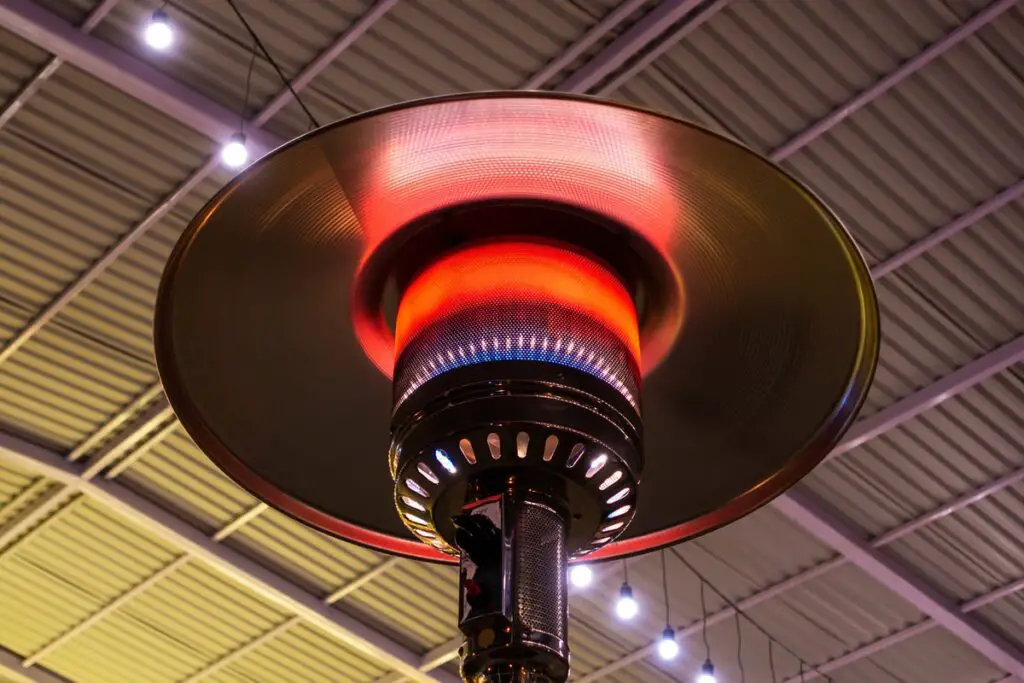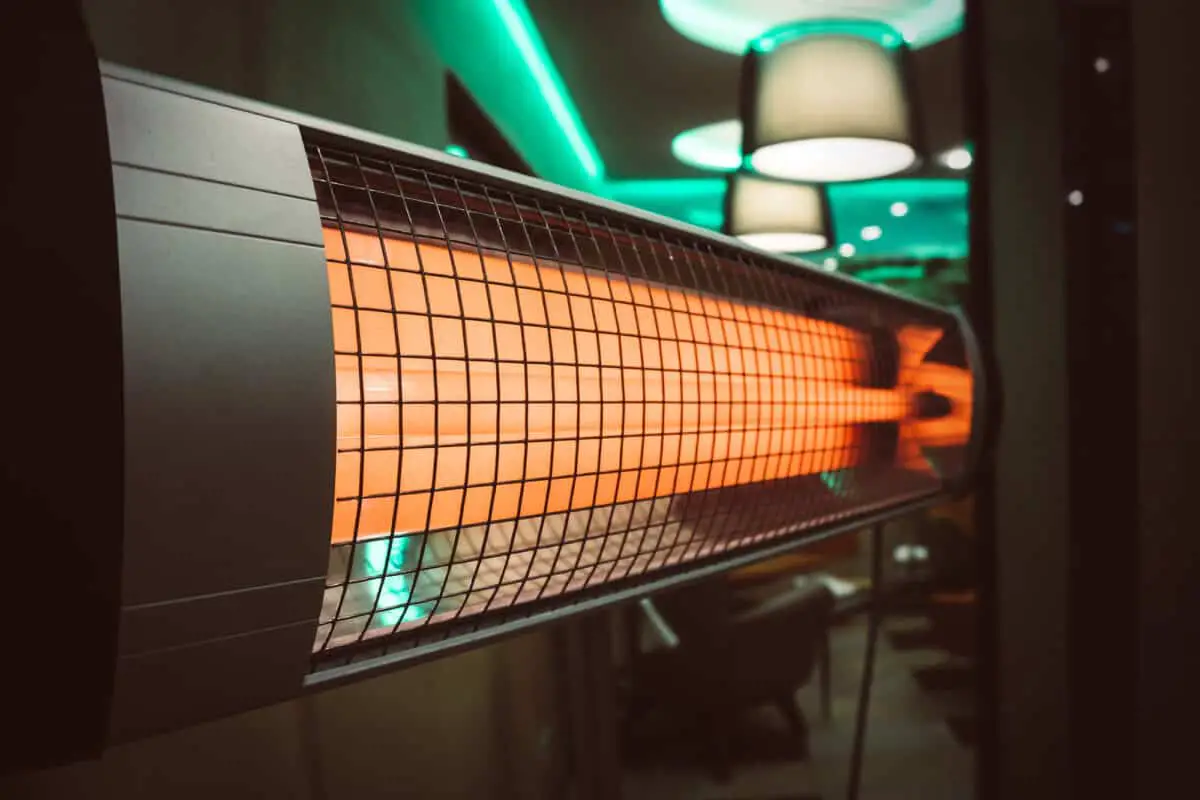When considering a patio heater in your garage, safety is always a top concern, and the age of the heater should be taken into account, as well as the ventilation within the structure.
During the colder months, work is still to be done in the garage. Repairs and projects continue, but staying warm can be a challenge.
Some people have found that outdoor patio heaters provide a vital heat source for their indoor/outdoor workspace. But how safe is a patio heater in your garage?
It’s always better to be safe than sorry, so don’t hesitate to ask questions about safety.

Table of Contents
Using a Patio Heater In Your Garage
Using a patio heater as a source of heat in your garage can be dangerous due to multiple safety hazards. Flammable gases may also be present near the heater, and faulty wiring may cause sparks to ignite a fire.
Patio heaters should be used with caution. We will review the various types of heaters to make an informed decision about their safety for indoor use.
However, even patio heaters that meet indoor criteria should be used with caution. We will evaluate the safety of indoor use for different types of patio heaters.
Type of Patio Heater
The patio heater is fueled by gas and produces a tall and controlled flame when ignited.
The heat can come from the flame or the metal casing at the top of the heater, which then radiates heat to the surrounding area.
The type of ignition or heating that is used will determine the heater’s safety and if you can use a patio heater in your garage.
Propane
Propane-style patio heaters house a propane tank in the bottom compartment which acts as the gas source to produce a tall, controlled flame that heats the surrounding area when turned on and ignited.
Sometimes that flame is the heat source; other times, that flame heats the metal casing at the top of the heater, which in turn produces the warmth.
Restaurants often use propane patio heaters due to their affordability and accessibility. Propane is a reliable heat source and is widely available, making it the preferred choice for most inexpensive patio heaters.
Related Reading: Safety tips for indoor propane heaters
Natural Gas
The natural gas patio heater works similarly to propane heaters. Gas is stored in the bottom and ignites a flame that heats the area around it.
Generally, a 13kg gas cylinder can heat for approximately 10 hours before needing replacement.
Many patio heaters can run on either propane or natural gas, both affordable options. These heaters can also be easier to move around if needed.
There is caution as this heater requires proper ventilation.
Electric
The electric patio heater works similarly to a space heater, heating up metal prongs that spread heat across the patio without the need to refill propane tanks or replenish a supply.
These types of patio heaters don’t have open flames or lingering gas, but they are more expensive than gas-driven heaters and don’t heat up as well.
The electric patio heater functions as both the heating device and the shell for the flame.
You need a reliable source of electricity or a generator to use this type. Additionally, you may need an electrician to install an electric source for your heater.
Which Patio Heaters Can Be Used Indoors?
It’s important to note that while all patio heaters come with a warning to be cautious when using them indoors, some are safer than others.
The propane and natural gas heaters, for example, create too many risks to be verifiably safe as a patio heater in your garage.
Using an open flame is inherently dangerous, as the exposed gas could ignite with a spark from your work, leading to a possible explosion or fire.
Additionally, the accumulation of gas in a confined area raises safety concerns.
If you plan to use a patio heater in your garage, the electric patio heater is the best option.
Electric heaters are preferred for indoor spaces as they eliminate the risk of gas explosions and open flames, which is especially important when working with sparks and flames.
Electric heaters have some safety concerns, but the overall fear is significantly reduced.
Patio Heater Care
It’s crucial to prioritize maintenance and repairs for your patio heater. This not only keeps it in good condition but also ensures safety.
Infestation is one of the biggest problems with patio heaters. When not in use, it can become a safe haven for bugs and small critters.
Clean out your space heater before using it to avoid cooking any bugs.
Keep your patio heater dry; otherwise, its performance may suffer. Be sure to dry off any water that gets into the casing or bottom of the patio heater before using it.
When cleaning, use small amounts of soap and water, apply with a rag, and avoid direct water contact. Dry thoroughly before use.

Alternative Heating Methods For Your Garage
When considering the safety of using a patio heater indoors, it’s best to opt for a safer and smarter alternative. But what is that alternative?
A standard space heater is a safe and suitable option for indoor garage heating, although it may not provide as much coverage or warmth as a patio heater.
Various indoor space heaters run on electricity and come in different sizes for your desired coverage.
Final Thoughts
While electric patio heaters are safe for indoor use, propane or natural gas heaters pose a significant risk and should only be used outdoors.
The risk of fire or an explosion is too significant to take the chance of putting a gas patio heater in your garage.
Using electric heaters that can be used either outdoors or indoors is best. Most will have garage use as one of their purposes.
Stay warm while you work this fall and winter with alternative options like a space or electric heater that can be used in garages.
Always use caution and stay safe!
Enjoy living the outdoor life!!!
